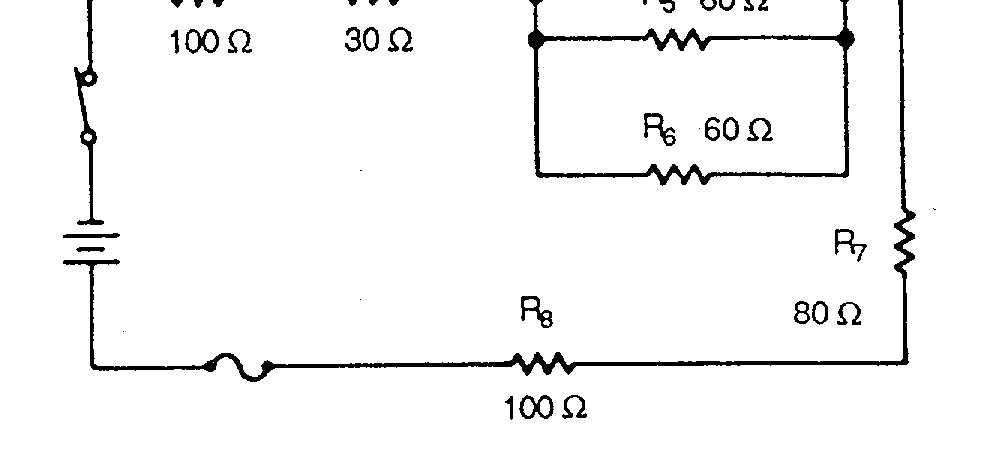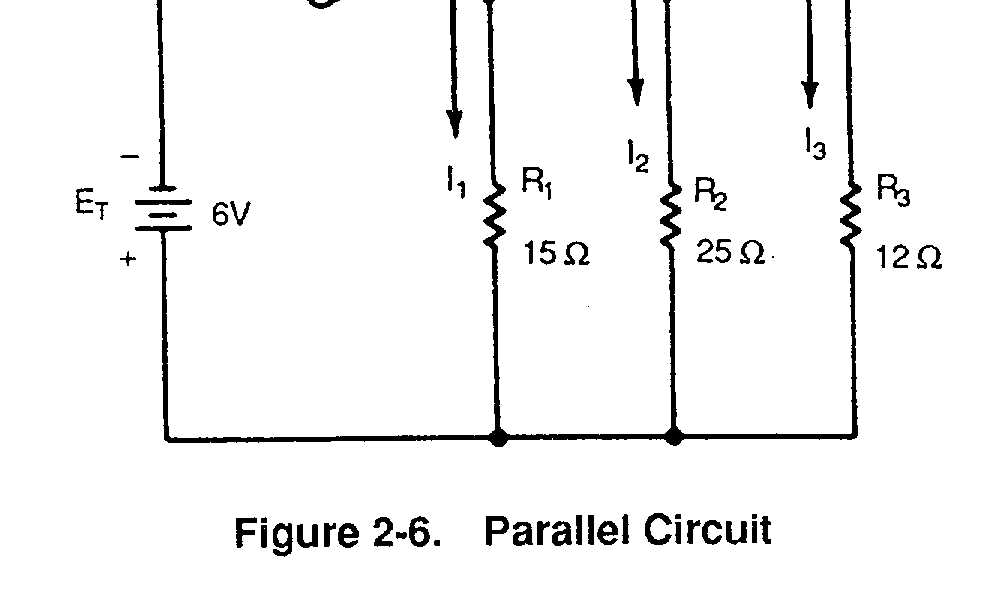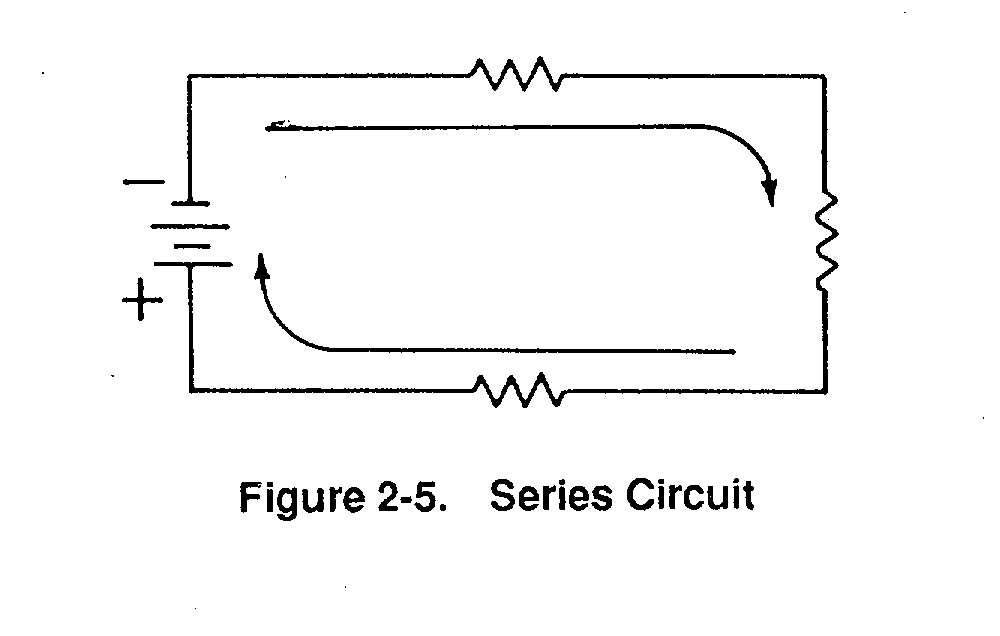TM 1-1500-204-23-4
Figure 2-5. Series Circuit
Figure 2-7. Compound Circuit
d.
Ammeter. An ammeter measures either dc or ac
current. To measure current, the circuit under test is
broken, and an ammeter is inserted into the break. Its
scale is usually graduated in kiloamperes, amperes,
milliamperes, or microamperes.
e.
Voltmeter. A voltmeter is a current measuring
instrument designed to indicate voltage by measuring the
current flow through a resistance of known value. Its
scale is usually graduated in volts. D'Arsonval voltmeters
are being phased out by digital voltmeters.
f.
Ohmmeter. An ohmmeter measures electrical
resistance and is used to check circuit continuity. Its
scale is usually graduated in ohms, megaohms, or both.
g.
Multimeter. A multimeter is an instrument
incorporating two or more meter circuits and a meter
movement in a single case. A typical multimeter contains
voltmeter, ammeter, and ohmmeter circuits using a single
meter movement. The function switch,. as shown in
figure 2-10, must be placed in the proper position for the
type of measurement to be made. The range switch must
be set to the range desired.
h.
Electrodynamometer. The electrodynamometer
or wattmeter generally is used to measure power taken
from the line for operation of any piece of electrical
equipment.
i.
Rectifier Meter. Low-frequency ac measurements
are made with a rectifier meter. The rectifier meter is
more sensitive and more accurate than the moving vane
D'Arsonval-type meters. The function of a rectifier meter
is to change ac to a form of dc. The ac is rectified, and
the pulsating dc is measured by the meter.
j.
Wattmeter. The wattmeter (electrodynamometer)
is used to measure power in an electrical circuit. Its scale
is usually graduated in watts. The wattmeter consists of
two stationary coils and one moving coil. The stationary
coils have many turns of small wire with high resistance.
The movable coil has a few turns of large wire with low
resistance and is pivoted in jewelled bearings. The meter
needle is attached to one end of the movable-coil shaft,
and the damping arrangement, similar to that of the
moving-vane meter, is attached to the other end. Springs
are provided to control the needle swing.
k.
Frequency Meters. Frequency or wavelength,
however,
may
be
determined
also
by
frequency
measuring devices known as wavemeters or beat
frequency
meters.
These
meters
indicate
the
fundamental or harmonic frequencies of oscillators or
harmonic generators on a calibrated dial. The wavemeter
is calibrated in terms of wavelength, and contains a
variable tuned circuit whose resonant frequency is
determined by the unknown frequency. The beat, or
heterodyne frequency, meter uses an oscillator to
generate signals of known frequencies and-compares
these with the unknown frequency.
2-7





